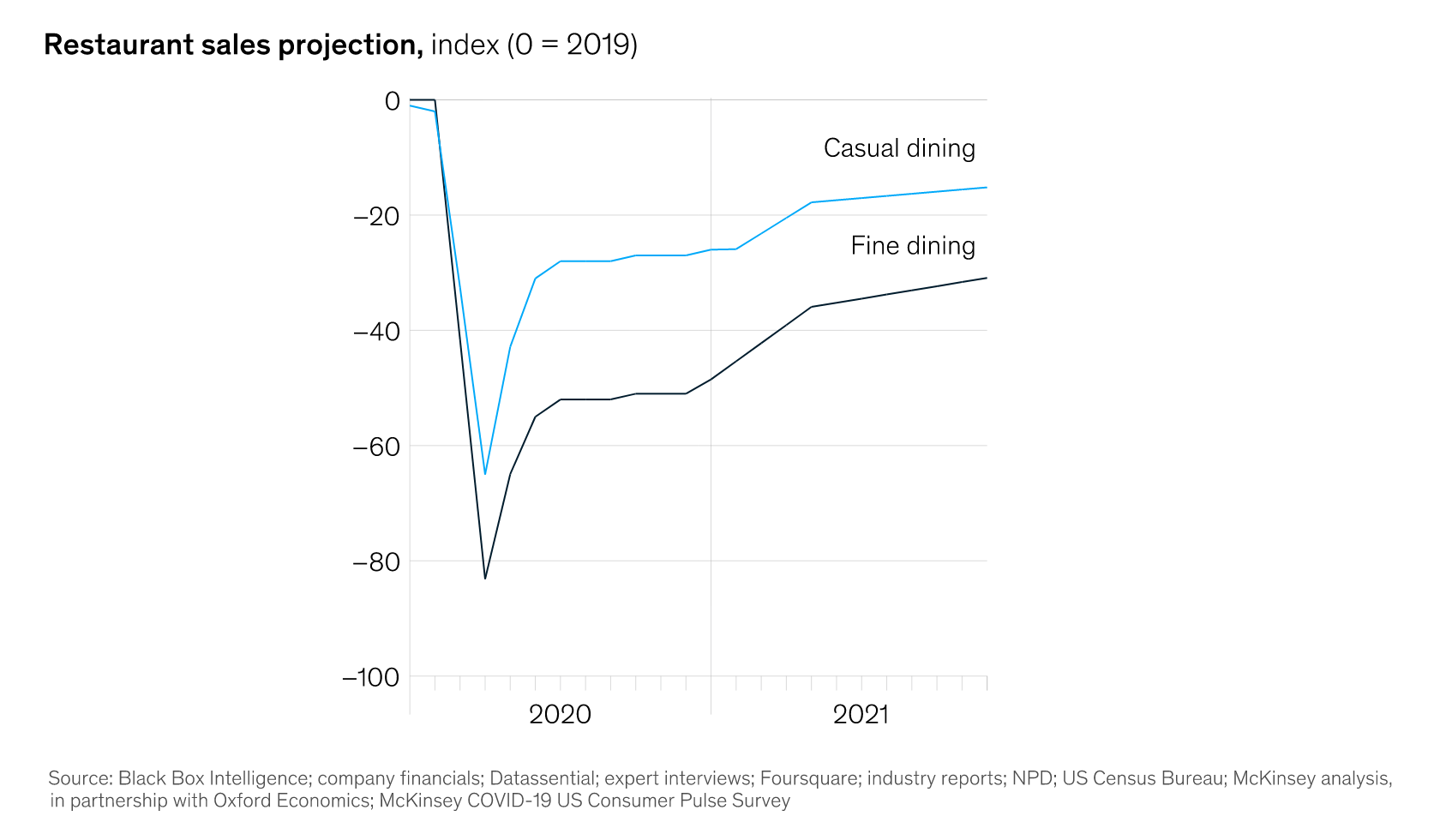5 Tips For Branding A Virtual Restaurant
According to industry analysts, the casual and fine dining recovery is expected to be years away, with 2021 only pushing us upwards to lower, negative numbers[1]:

In that kind of prolonged environment, it’s no wonder operators have been experimenting with lower overhead models, like virtual brands that focus solely on takeout, curbside and delivery. In fact, these models are demonstrating the type of growth the industry desperately seeks, with sales forecasts for ghost restaurants at +42% and unit growth at +18%.[2]
While virtual models can also be a means to higher profitability, word on the street is that “marketing can be a challenge when a restaurant has no physical location.”[3] Lack of a physical presence is a barrier to trial for roughly 4 in 10 U.S. adults.[4] In our humble opinion, one of several reasons Chipotle Digital Kitchen and Buffalo Wild Wings GO have experienced triple-digit sales increases,[5] is because they are visibly linked (in name and offering) to already familiar and successful brands.
For operators pursuing virtual concepts, we offer up our short list of branding advice:
1. Tell your story. There’s a reason websites always contain an “About Us” section – consumers (and investors) are curious – about the founder(s), the reason you exist, your values and what kind of future you want to create. Aside from the menu, they need something to believe in. Whether your virtual concept was born out of recognizing a consumer unmet need, or avoiding personal bankruptcy, tell it like it is. Americans value authenticity, entrepreneurialism and vision.
2. Take great pictures. Food porn has become table stakes. According to virtual brand, Zombie Burger Co., “killer photos on digital menus and third party platforms are key to getting that first look, that first click.” While we recommend investment in a professional food photographer, if you need to be scrappy, check out DIY tips and tricks from our May 2020 Issue: Take Your Best Shot.
3. Optimize search. With digital apps and websites the only point-of-sale for virtual brands, and often a key awareness vehicle, having a search strategy is paramount to get your unknown brand noticed. If you’re calling yourself “Wings R Us”, make sure you link yourself to critical key words, e.g., the obvious “wings” and “chicken”, but also consider relevant adjacencies or growing categories like “snack”.
4. Deepen customer relationships through branded experiences. Don’t over rely on the food to drive loyalty – there are an estimated 100,000 virtual concepts on 3rd party apps[6] – differentiate and endear yourself with additional engagements, e.g., personalized offers, contests, VIP invites, product testing opportunities, virtual classes or tastings, live mealtime entertainment via Zoom, post-meal follow-ups on customer satisfaction, random acts of kindness, etc.
5. Be consistent. Set brand guidelines to ensure the same look, feel, voice, tone, personality and overall vibe is carried through all consumer touchpoints.
Just as “Rome wasn’t built in day”, neither are brands, but hopefully the above will help you move faster!
[1] “Eating out(side): Restaurant dining in the next normal”, McKinsey & Company, 8/20
[2] “More than one way to go virtual: The delivery-only restaurant brand space grows more complex with myriad models”, Nation’s Restaurant News, 8/25/20
[3] “Virtual Brands Emerge From The Shadows”, Restaurant Business, 9/21/20
[4] “2020 Delivery and Takeout Consumer Trend Report”, Technomic, 2020
[5] “Chipotle Mexican Grill introduces digital-only restaurant”, 11/11/20 and “Buffalo Wild Wings to open ‘GO’ format unit in Georgia”, 5/11/20, Nation’s Restaurant News
[6] “Just How Many Virtual Brands Are There?”, Restaurant Business, 8/13/20
